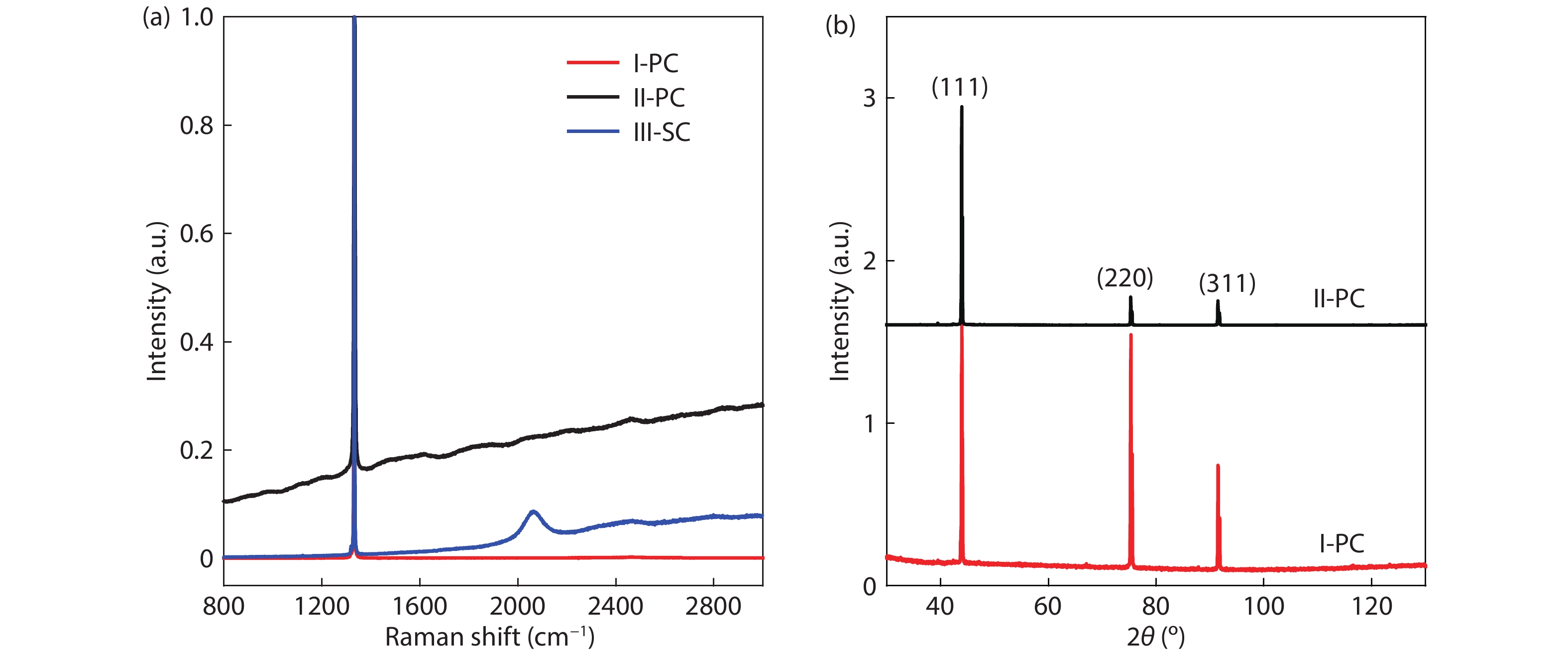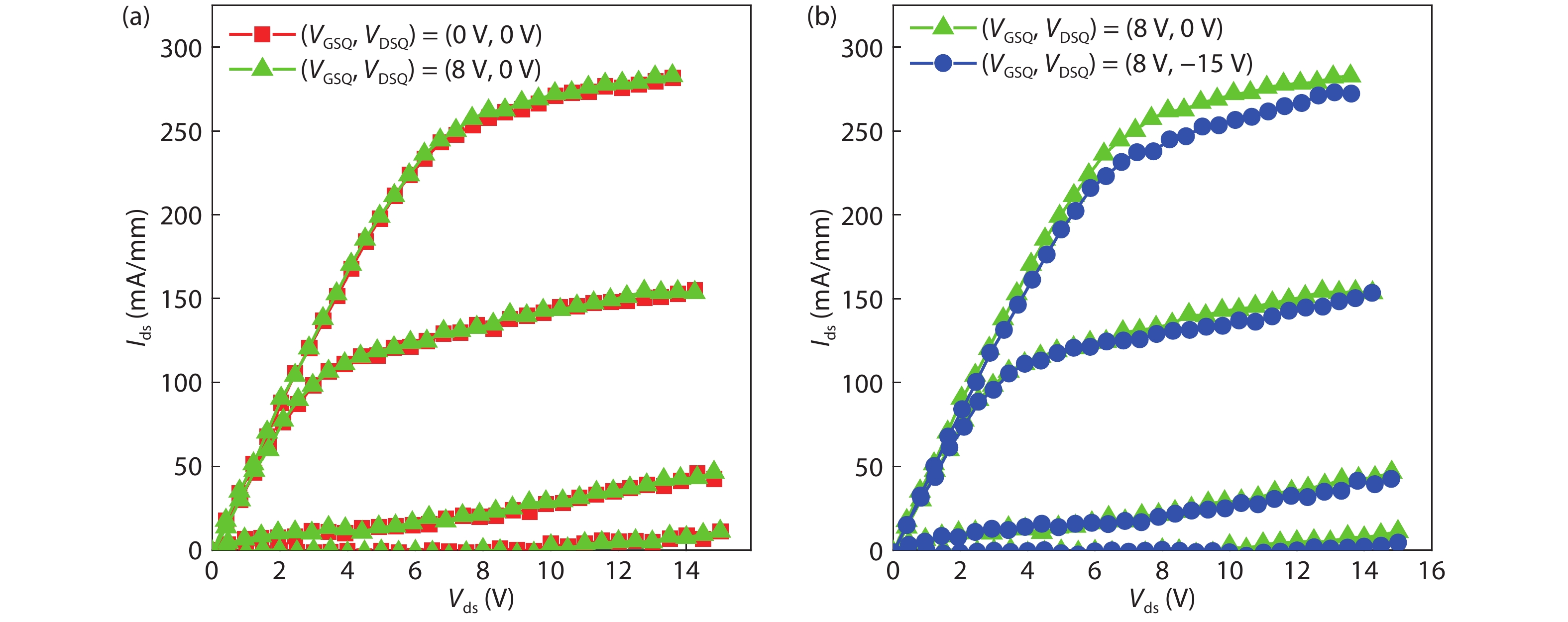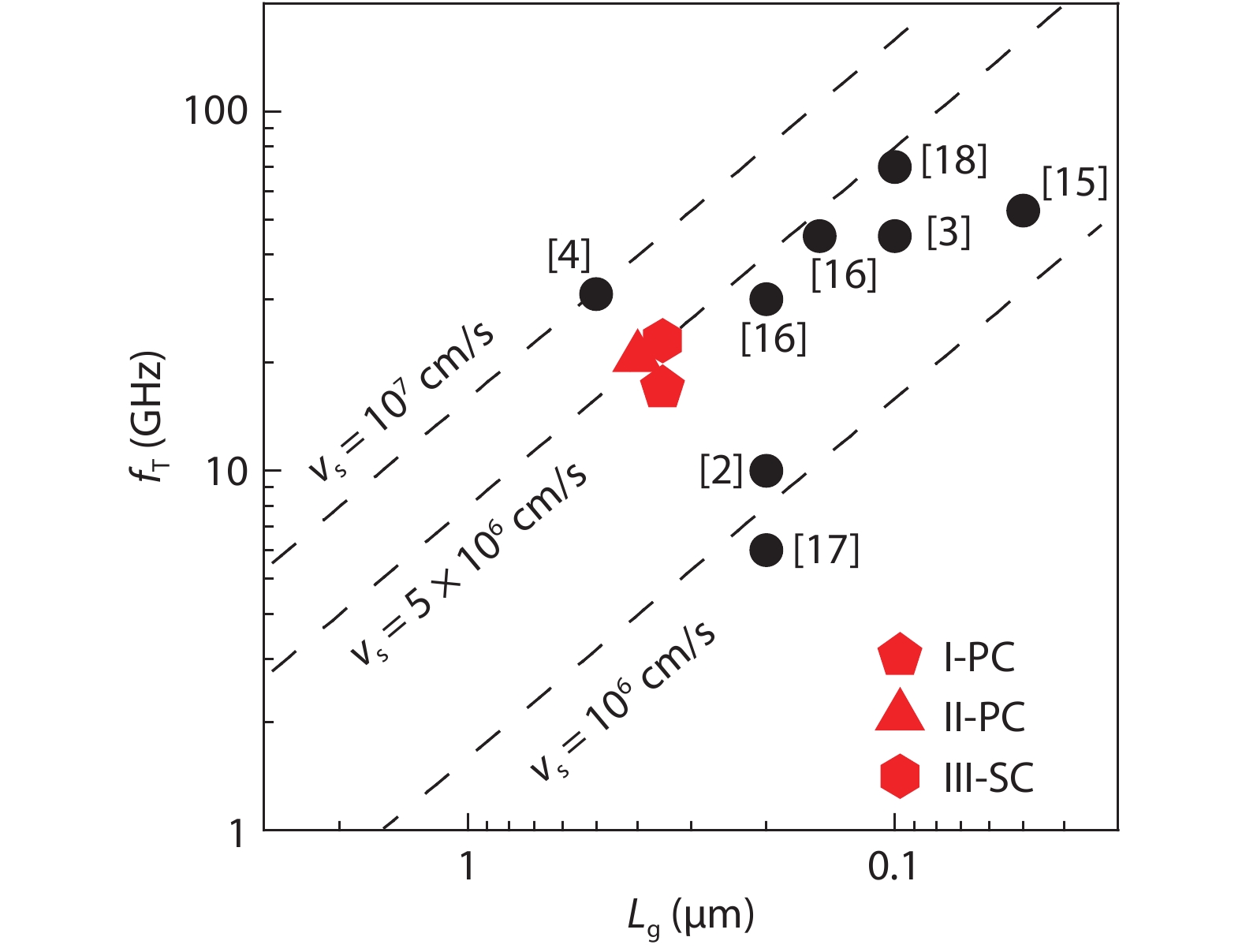| Citation: |
Rui Zhou, Cui Yu, Chuangjie Zhou, Jianchao Guo, Zezhao He, Yanfeng Wang, Feng Qiu, Hongxing Wang, Shujun Cai, Zhihong Feng. Performance of hydrogenated diamond field-effect transistors on single and polycrystalline diamond[J]. Journal of Semiconductors, 2020, 41(12): 122801. doi: 10.1088/1674-4926/41/12/122801
****
R Zhou, C Yu, C J Zhou, J C Guo, Z Z He, Y F Wang, F Qiu, H X Wang, S J Cai, Z H Feng, Performance of hydrogenated diamond field-effect transistors on single and polycrystalline diamond[J]. J. Semicond., 2020, 41(12): 122801. doi: 10.1088/1674-4926/41/12/122801.
|
Performance of hydrogenated diamond field-effect transistors on single and polycrystalline diamond
DOI: 10.1088/1674-4926/41/12/122801
More Information
-
Abstract
In this work, we investigate the influence of defect concentration of the diamond substrates on the performance of hydrogen-terminated diamond field-effect transistors by Raman spectra, pulsed I–V characteristics analysis, and radio frequency performances measurements. It is found that a sample with higher defect concentration shows larger drain-lag effect and lower large-signal output power density. Defects in the diamond act as traps in the carrier transport and have a considerable influence on the large-signal output power density of diamond field-effect transistors. This work should be helpful for further performance improvement of the microwave power diamond devices.-
Keywords:
- diamond,
- transistor,
- trap,
- defect,
- power density
-
References
[1] Wort C J H, Balmer R S. Diamond as an electronic material. Mater Today, 2008, 11(1/2), 22 doi: 10.1016/S1369-7021(07)70349-8[2] Hirama K, Sato H, Harada Y, et al. Thermally stable operation of H-terminated diamond FETs by NO2 adsorption and Al2O3 passivation. IEEE Electron Device Lett, 2012, 33(8), 1111 doi: 10.1109/LED.2012.2200230[3] Ueda K, Kasu M, Yamauchi Y, et al. Diamond FET using high-quality polycrystalline diamond with fT of 45 GHz and fmax of 120 GHz. IEEE Electron Device Lett, 2006, 27(7), 570 doi: 10.1109/LED.2006.876325[4] Imanishi S, Horikawa K, Oi N, et al. 3.8 W/mm RF power density for ALD Al2O3-based two-dimensional hole gas diamond MOSFET operating at saturation velocity. IEEE Electron Device Lett, 2018, 40(2), 279 doi: 10.1109/LED.2018.2886596[5] Yu C, Zhou C J, Guo J C, et al. RF performance of hydrogenated single crystal diamond MOSFETs. 2019 IEEE International Conference on Electron Devices and Solid-State Circuits (EDSSC), 2019[6] Camarchia V, Cappelluti F, Ghione G, et al. An overview on recent developments in RF and microwave power H-terminated diamond MESFET technology. International Workshop on Integrated Nonlinear Microwave and Millimetre-wave Circuits (INMMiC), 2014[7] Wang J J, He Z Z, Yu C, et al. Comparison of field-effect transistors on polycrystalline and single-crystal diamonds. Diamond Relat Mater, 2016, 70, 114 doi: 10.1016/j.diamond.2016.10.016[8] Koizumi S, Umezawa H, Pernot J, et al. Power electronics device applications of diamond semiconductors. Woodhead Publishing Series in Electronic and Optical Materials, 2018[9] Woltera S D, Praterb J T, Sitara Z. Raman spectroscopic characterization of diamond films grown in a low-pressure flat flame. J Cryst Growth, 2001, 226, 88 doi: 10.1016/S0022-0248(01)01274-X[10] Zhou C J, Wang J J, Guo J C, et al. Radio frequency performance of hydrogenated diamond MOSFETs with alumina. Appl Phys Lett, 2019, 114, 063501 doi: 10.1063/1.5066052[11] Yu C, Zhou C J, Guo J C, et al. 650 mW/mm output power density of H-terminated polycrystalline diamond MISFET at 10 GHz. Electron Lett, 2020, 56(7), 334 doi: 10.1049/el.2019.4110[12] Sato H, Kasu M. Maximum hole concentration for Hydrogen-terminated diamond surfaces with various surface orientations obtained by exposure to highly concentrated NO2. Diamond Relat Mater, 2013, 31, 47 doi: 10.1016/j.diamond.2012.10.007[13] Yamanaka S, Takeuchi D, Watanabe H, et al. Low-compensated boron-doped homoepitaxial diamond films using trimethylboron. Phys Status Solidi A, 1999, 174(1), 59 doi: 10.1002/(SICI)1521-396X(199907)174:1<59::AID-PSSA59>3.0.CO;2-A[14] Hirama K, Tuge K, Sato S, et al. High performance p-channel diamond metal-oxide-semiconductor field-effect transistors on H-terminated (111) surface. Appl Phys Express, 2010, 3(4), 044001 doi: 10.1143/APEX.3.044001[15] Russell S A O, Sharabi S, Tallaire A, et al. Hydrogen-terminated diamond field-effect transistors with cutoff frequency of 53 GHz. IEEE Electron Device Lett, 2012, 33(10), 1471 doi: 10.1109/LED.2012.2210020[16] Hirama K, Takayanagi H, Yamauchi S, et al. High-performance p-channel diamond MOSFETs with alumina gate insulator. IEDM Tech Dig, 2007, 873[17] Camarchia V, Cappelluti F, Ghione G, et al. RF power performance evaluation of surface channel diamond MESFETs. Solid-State Electron, 2011, 55(1), 19 doi: 10.1016/j.sse.2010.09.001[18] Yu X X, Zhou C J, Qi C J, et al. A high frequency hydrogen-terminated diamond MISFET With fT/fmax of 70/80 GHz. IEEE Electron Device Lett, 2018, 39(9), 1373 doi: 10.1109/LED.2018.2862158[19] Tasker P J, Hughes B. Importance of source and drain resistance to the maximum fT of millimeter-wave MODFETs. IEEE Electron Device Lett, 1989, 10(7), 291 doi: 10.1109/55.29656[20] Ivanov T G, Wei J, Shah P B, et al. Diamond RF transistor technology with ft = 41 GHz and fmax = 44 GHz. IEEE/MTT-S International Microwave Symposium - IMS, 2018, 1461 -
Proportional views






 DownLoad:
DownLoad:

















